driving competitor non-brand search from $0 to $7k per day, for an 8-figure supplement brand.
The supplements space is ferociously competitive. This is the story of how we scaled competitor search for an 8-figure women's supplement brand. .
One
Introduction
What this case study will cover?
For Facebook-first brands, diversifying acquisition remains a considerable challenge, particularly when looking to break in to Google non-brand search. Sky high CPC’s, rampant competition, and Conversion Rate challenges are just a few reasons why brands fail to scale past a couple of thousand dollars in ad spend per day.
However, smart brands remain undeterred, knowing that the opportunity here is considerable.
This case study delves into how our client partner, an 8-figure behemoth in the women’s supplements space, partnered with blimpp to diversify customer acquisition efforts through non-branded search.
We’ll explore the obstacles we faced in previous demand generation efforts, the development and execution of a powerful non-branded strategy, and the results we achieved. Through analysing performance and the valuable insights we gained, we aim to provide guidance to other women’s supplement brands looking to improve their demand generation efforts through search.
Two
The Brand
Who are is the brand?
As a women’s health brand, our client faced significant challenges in standing out in a crowded market. To address this challenge, we developed a competitor bidding strategy that enabled the brand to focus on hijacking competitor brand traffic, in an effective way that maximised ROAS.
In this case study, we’ll discuss the challenges faced by the brand before working with us, the competitor bidding strategy we developed and implemented, and the results achieved through this strategy.
We’ll also provide examples of ad copy assets used in the campaign and highlight the potential for future growth and expansion.

Three
The Challenge
Being in a highly competitive space, this women’s supplement brand faced several challenges scaling non-brand search; with numerous brands vying for the attention of potential customers, it was difficult for the brand to scale convention non-brand search, with low Quality Scores, CTR and Conversion Rates hindering efforts.
Despite offering high-quality supplements that were backed by scientific research, scaling non-brand search remained an elusive hurdle. When we audited the campaigns initially, we found the following issues which were preventing growth:
- A handful of campaigns targeting broad areas of search.
- Ineffective negative targeting, which blocked out relevant search terms and failed to address terms of varying intent from matching to the same campaign.
- No real focus on audience insights to help propel the right message to the right audience.
- Most of the spend was focused on transactional search, with little focus on the other areas of non-brand: informational, and competitor.
- The vast majority of spend was going to ads that ran directly to product pages.
To address these challenges, we worked hand-in-hand with the brand to develop a targeted non-brand search strategy that maximised intent across each area of search. We recognised that a particular focus on competitor bidding could be the most highly effective, as they operated in a competitive space with many alternatives.
Other reasons why competitor bidding was prioritised included:
- Ready-made targets. Most brands in this space spent considerably in building brand presence, through a mix of Facebook and TikTok ads. A by-product of this was sizeable competitor brand search to target. Search volumes in some cases were in the 10,000s.
- Results were directly replicable. Unlike other areas of search, we could take the approach that worked across one brand, and apply it to another, with the expectation of similar success – so long as USPs and search volumes were aligned.

We recognised that CPC would be an issue, with competitor bidding historically seeing CPCs of $7+. That was unsustainable in this case, so we had to beat sky-high, pay-to-play CPCs, through a mix of effective ad copy, landing page experience, and bidding strategy.
Together with the brand, we formulated a plan; instead of a broad-based non-brand strategy which employed a handful of campaigns to scale far and wide, we devised a much more purposeful approach to non-brand search, with competitor bidding at the centre.


Four
The Strategy
What steps did we take to drive revenue with competitor search?
To help the brand achieve their customer acquisition aims to scale non-brand spend to at least five figures per day – profitably – we developed a competitor bidding strategy that was designed to increase their visibility at a crucial moment in the buyer journey.
Specifically, we worked to draw up a short-list of direct and indirect competitors to target, with substantial search volumes, comparable USPs, and aligned with the key audiences that were most valuable to us.
Once we had a clear plan of attack, we then looked at how best to execute – specifically through robust practices in keyword, audience, and ad strategy.
Keyword Strategy
We isolated key brands in core and supporting areas, and then launched our three-tier non-brand search approach to isolate intent across specific campaign types – informational, transactional, and competitor.
Informational searchers, such as those whom were problem-aware searching for answers to specific women’s health questions, represented the largest portion of opportunity, but were by far the most difficult to convert, due to the relatively low intent.
Transactional searchers, representing those users actively in-market, saw crowded competition in most cases, particularly from the likes of Amazon. They were both problem and solution-aware, and could be converted more efficiently than informational audiences.
Finally, competitor searchers, or those who were searching for other brands and products, were the core element of non-brand strategy,
Our approach here was only to brands which met a strict criteria:
- Keywords needed to be of sufficient volume, with volume in the thousands.
- Specifically, we would look at a combination of terms related to brand names, social proof signals, and also informational terms around brand product efficacy.
- Pain points needed to be aligned to our clients’ product, with targetable USPs.

We used a combination of match types in order to keep intent as tight as it could be, overlaid with smart negative lists that eradicated informational and transactional terms from competitor campaigns – we only wanted to appear for relevant competitors, not a mish-mash of terms which would muddy targeting, and also contribute to lower than ideal Quality Score.
Audience Strategy
It’s easy to focus exclusively on keywords to inform targeting, however we knew that this was not the optimal approach if we were to gain success with our approach.
We therefore, looked to feed the bidding algorithm with as many relevant audience signals as possible, utilising a mix of first-party customer data, Google in-market and affinity data, and of course, extensive demographic targeting to ensure that only relevant people would see our ads.
Beyond that, we were also keen to gave Google as many relevancy signals as possible, so created a thorough list of audiences to target based on Googles Audience Insights tool.
Ad Strategy
Showing up on a competitor search landscape is just 20% of the battle. To win, you need to engage and convert.
Our ads would play a crucial role in that regards, with distinctive, competitor-specific USPs adopted in order to drive relevance. Without that, we’d just be another competitor ad in a sea of competitor ads.
It was vital that ads matched four key elements:
- They should, where possible, play on the competitors brand name. We knew that we’d have to be careful here, in order to avoid ads seeing the wrong side of Google ad policy, however with some creativity we were able to infuse ads with a sprinkling of competitor “puns”.
- It wasn’t enough to say that your product was better. People needed to see it. However, doing that within the confines of a character-limited Google search ad was challenging. So we introduced an element of doubt around product efficacy whilst accentuating one of our our own USPs. Simply by asking a question around whether a product worked or not, was enough to drive clicks, much more so than if we had just introduced some of our own USPs within the ad.
- Lastly, we introduced recency cues to the ads. People needed to see that our ads were based on recent, up-to-the-minute information. Again, we simply wouldn’t be able to do that with an “off-the-shelf” approach to non-brand search ads.
Through comprehensive ad theme testing, we found that for competitor search, ads which contained a competitor reference, and also referenced social proof or product efficacy cues out-performed other ads types. Ads which also contained recency cues saw a CTR uplift vs. ads without recency cues.
The focus on CTR, led to abnormally high click-throughs, which in turn led to Quality Scores as high as 9 in some cases – highly unusual for competitor journeys where typically low Quality Scores has long been considered an issue.
This also impacted favourably on click costs. Whereby, CPCs across competitor search had previously been as high as $7, we were now seeing sub-$2 clicks for the first time, enabling us to capture more competitor traffic than ever before.


Five
The Results
Within 6 months, our client partner was well on their way to unlocking scalable growth via non-brand search.
Profitable growth: Spending $7k per day profitably on competitor campaigns alone.
Revenue: Almost $500k banked from competitor campaigns in just under 6 months.
CTR: An average CTR of nearly 10%, across all competitor campaigns.
The testing process was critical to achieving these results, as it allowed blimpp to identify the most effective ad formats, keywords, and messaging for the client’s target audience. By continually refining the campaigns, we were able to optimise ROI and achieve significant growth in revenue across competitor search campaigns.
Six
Lessons Learned
Why targeting is critical, creative messaging is key, the importance of testing, and landing pages matter.
This activation provided several key lessons that other brands in the supplements space can learn from when developing their own demand creation and capture strategies:
Focus on the right competitors: It’s easy to target everyone and anyone, but the truth is that focus pays off. Understanding search volumes by competitor from the outset is a useful starting point.
Creative messaging: Aligning competitor search to ad copy that references said competitors, both directly and indirectly, worked well for us. As a result, we were able to achieve industry-beating CTRs of close to 10%, which facilitated cheaper click costs.
Testing at scale: Continuously testing different elements of the campaign, such as ad messaging, audiences, and bid strategy, remains crucial for refining the strategy and optimising ROI.
- Landing pages matter: Optimising landing pages for relevance specific to each search type remains one of the key levers to driving non-brand search growth.
Google. We Do It Better.
Ready to become our next success story?
Scaling seven and eight-figure Beauty & Wellness brands with Google Search & YouTube Ads.

